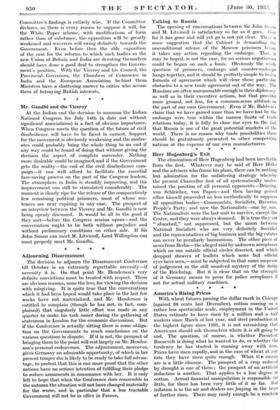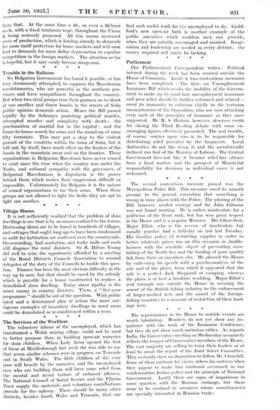America's Rising Prices With wheat futures passing the dollar mark
in Chicago (against 38 cents last December), cotton soaring on a rather less spectacular scale, employment in the United States estimate to have risen by a million and a half workers since March of last year, and steel production at the highest figure since 1931, it is not astonishing that Americans should ask themselves where it is all going to end. The question, of course, is whether President Roosevelt is doing what he wanted to do, or whether the tendency he has started is running away with him. Prices have risen rapidly, and in the case of wheat at any rate they have risen quite enough. What tl.e causes are is a little obscure. The prospect of a crop reduced by drought is one of them ; the prospect of an artificial reduction is another. That applies to a less degree to cotton. Actual financial manipulation is responsible for little, for there has been very little of it so far. But inflation is in the air and dealers are ,buying in the hope of further rises. There may easily enough be a reaction from that. At the same time a 40-, or even a 32-hour- week, with a fixed minimum wage, throughout the Union is being seriously proposed. All this means increased costs of production, which is leading already to demands for more tariff protection for home markets and will soon lead to demands for more dollar depreciation to equalize competition in the foreign-markets. The situation so far is hopeful, but it may easily become dangerous. * *











































 Previous page
Previous page